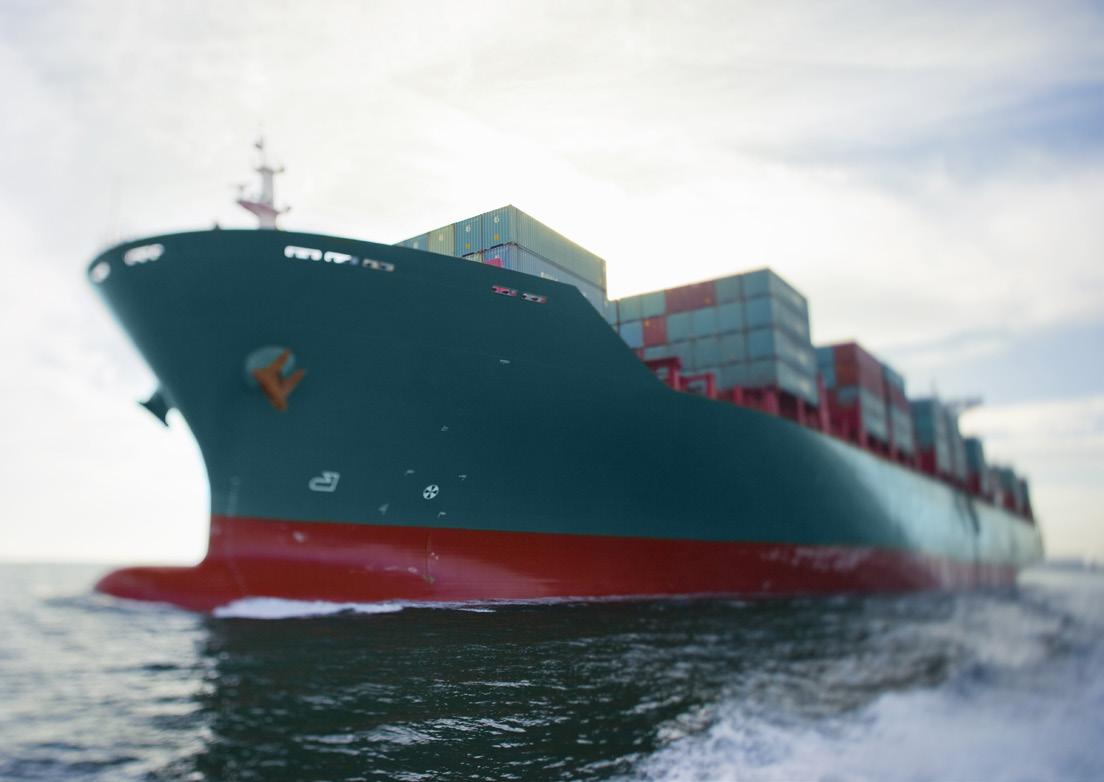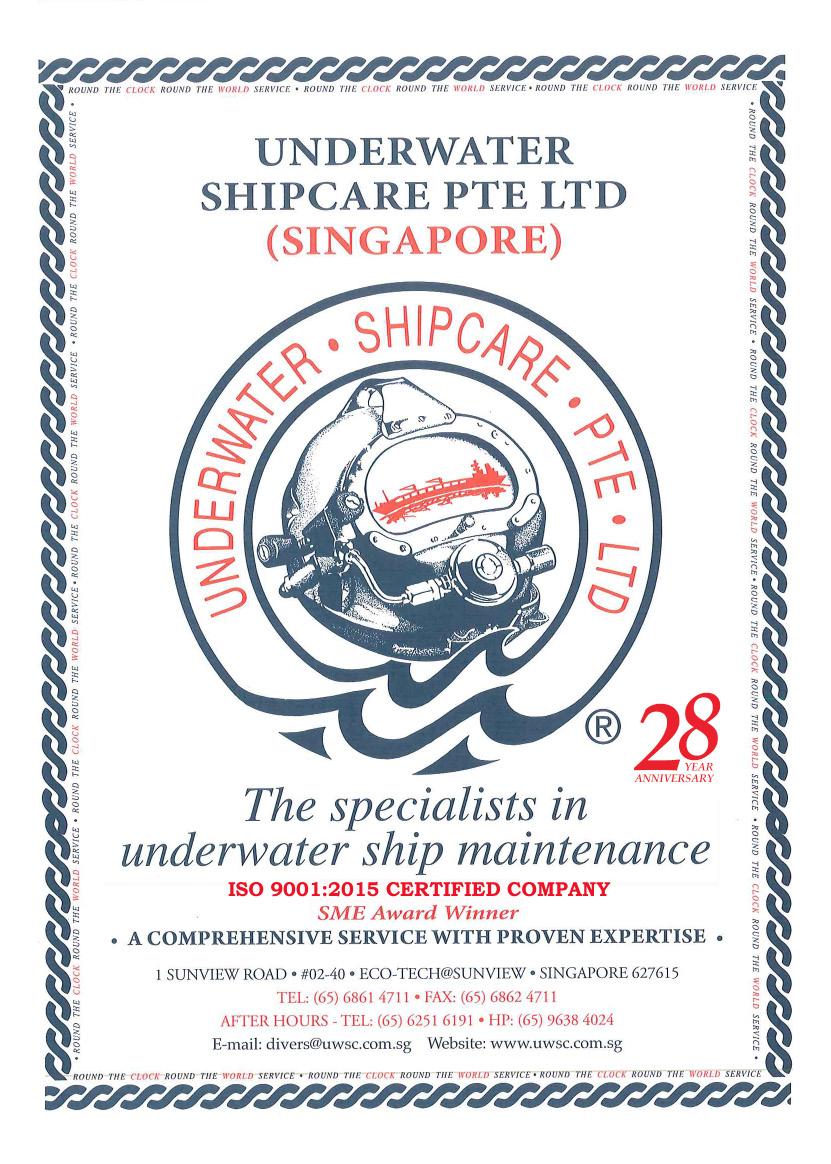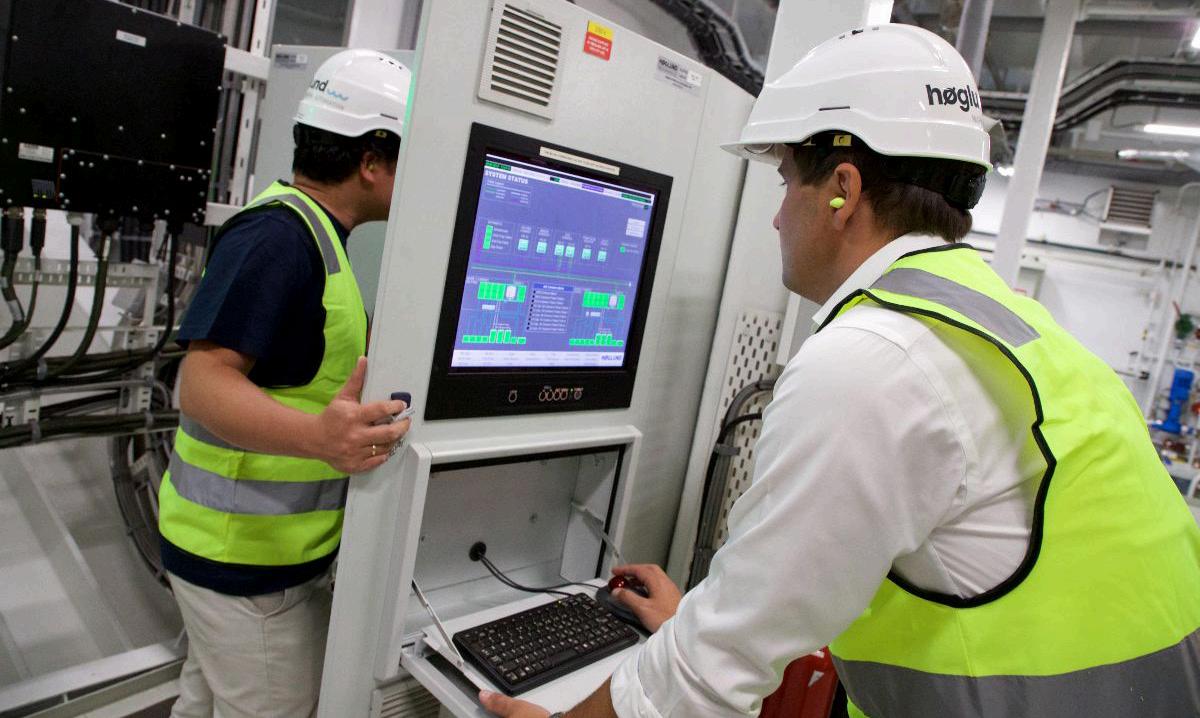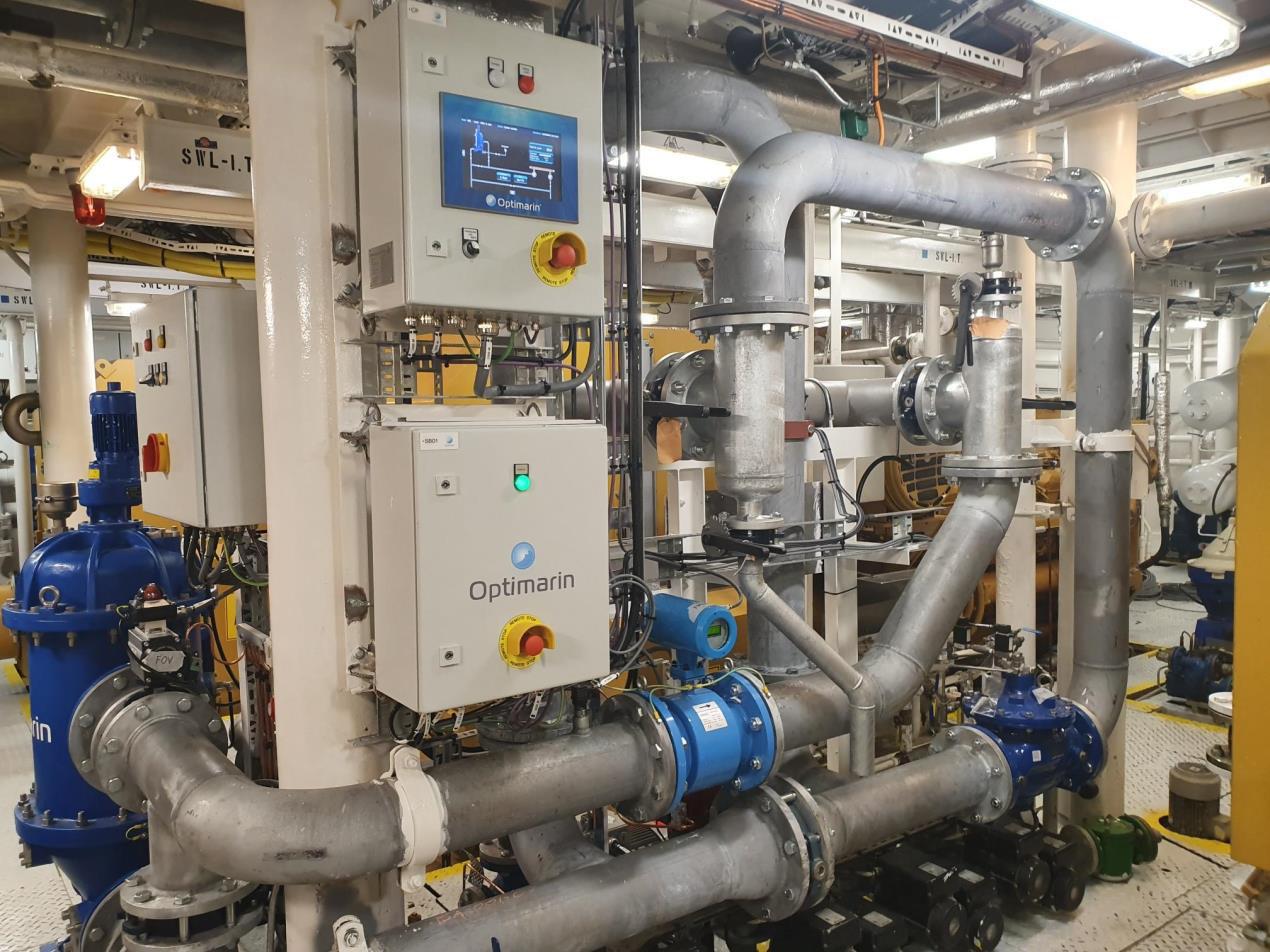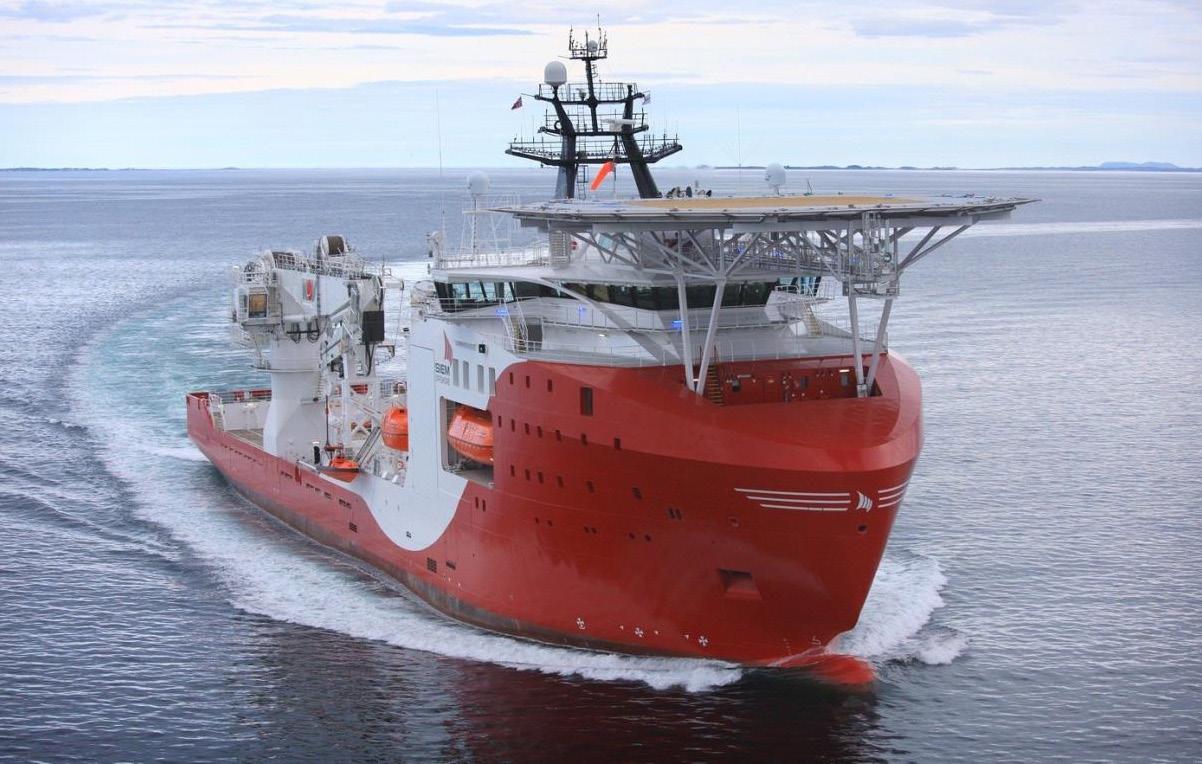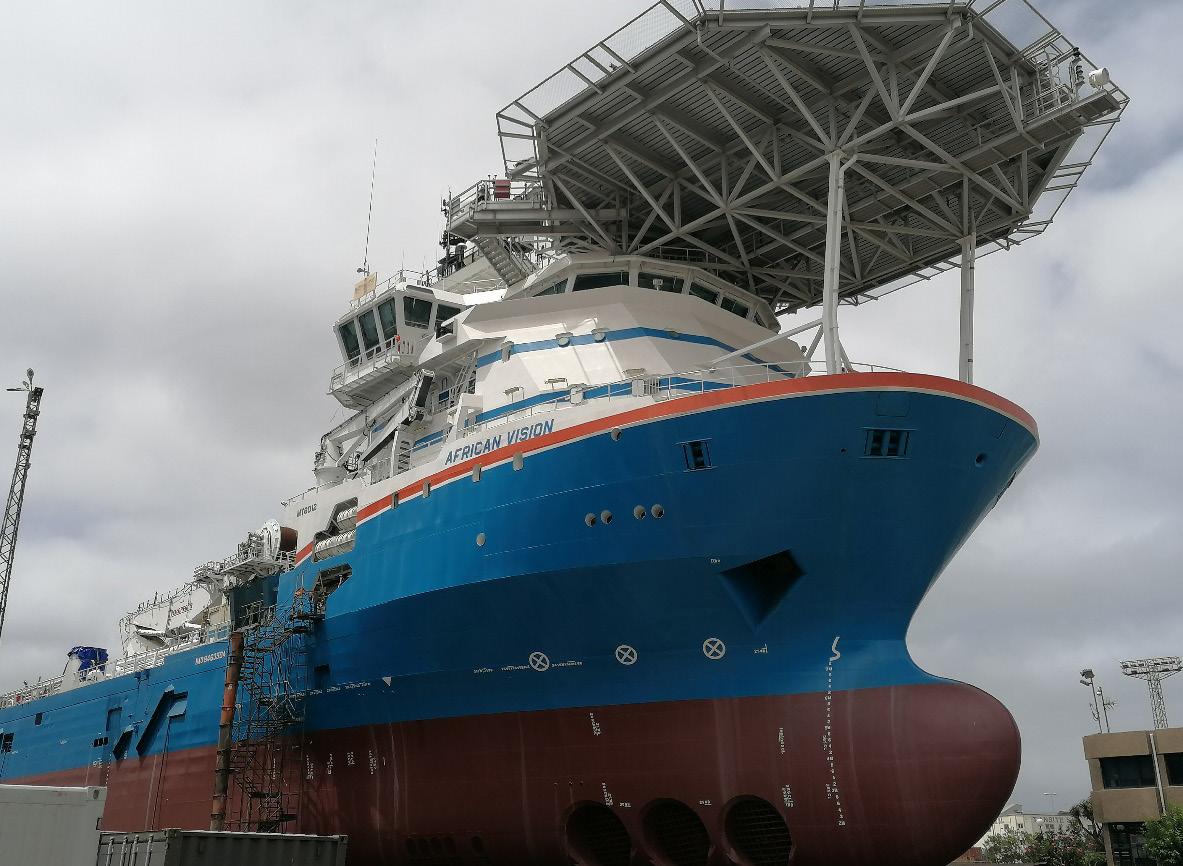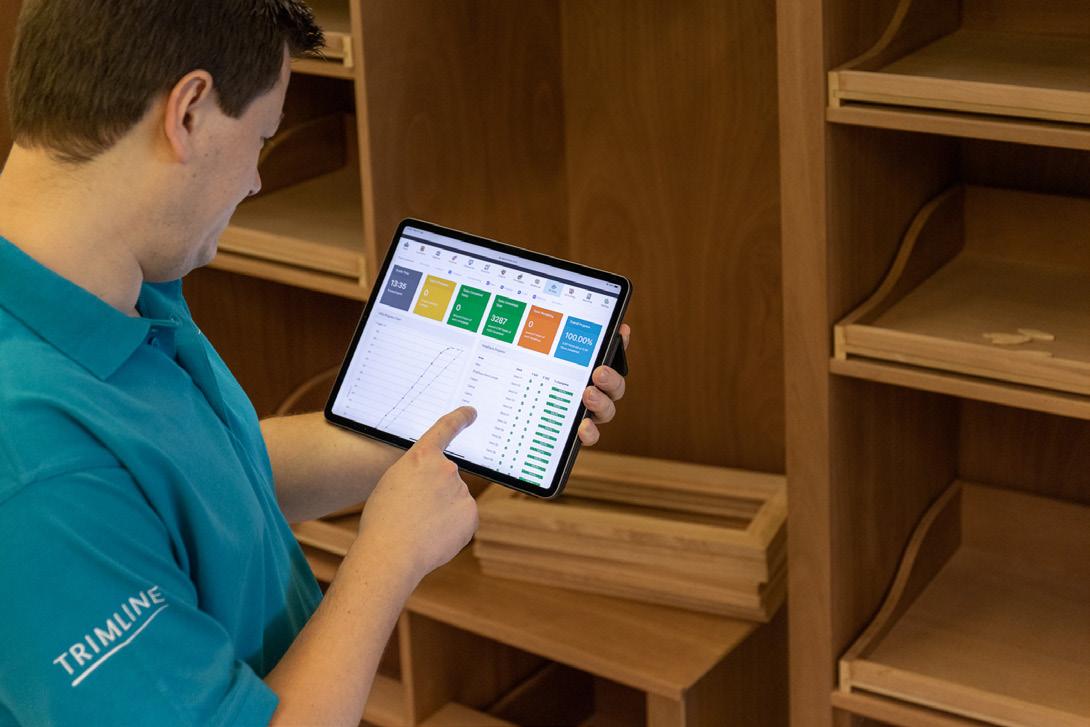
8 minute read
Wind Power
MOL and Vale sign agreement
Japan’s Mitsui OSK Lines has announced an agreement with Brazil’s Vale International to conduct a joint study on installation of Anemoi’s Rotor Sail wind propulsion system on a 200,000 dwt in-service bulk carrier, which mainly transports iron ore for steel production. The goal is to reduce GHG emissions from the vessel while underway.
Advertisement
Rotor Sails are unique, tall cylindrical sails that can be installed on the deck of commercial vessels. The Rotor Sails make use of the aerodynamic phenomenon known as the ‘Magnus Effect’. As the cylinder rotates within an airflow, a forward thrust force perpendicular to the apparent wind direction is created, which delivers additional thrust to the vessel. The thrust generated can either provide additional vessel speed or maintain vessel speed by reducing power from the main engine.
The joint study team will examine and verify the number of Rotor Sails to be installed and the effect of GHG reduction, working closely with Anemoi Marine Technologies, the manufacturer of the Rotor Sails. Anemoi, based in the UK, installed the world’s first Rotor Sail on a newbuilding ultramax bulk carrier in 2018.
The MOL Group is implementing five initiatives to realise the mid-tolong-term targets set out in the ‘MOL Group Environmental Vision 2.1’. Including this opportunity, it will pursue one of the initiatives ‘Enhancement of Energy-Saving Technologies’ and continually strive to reduce GHG emissions in co-operation with leading companies in various industries, with the goals of ‘Achieving net zero GHG emissions by 2050.’
Neptune Shipyard completes wing sails installation
Holland’s Tharsis Sea-River Shipping has concluded the installation of two retractable wing sails on its 88 m, 2,364 dwt diesel-electric general cargo vessel Tharsis at the Neptune Shipyard in Hardinxveld-Giessendam (formerly IHC’s Merwede Shipyard, near Rotterdam). The work was undertaken at the same time as the vessel was having its air lubrication system upgraded.
The 3 m x 9 m TwinFoil units are supplied by Netherlands-based eConowind and the units are both integrated in a specially designed aluminium Flatrack from which the folding TwinFoil’s can be deployed. The TwinFoil is a further innovation for eConowind next to their previously designed VentiFoils. The TwinFoil is a wing with a flap principle similar to those used by aircraft during landing and take-off.
“With this installation operating in both river and North Sea routing with varying winds we are eager to see how the rigs perform, especially with the unique combination of this self-adjusting technology in combination with a modern diesel-electric drive,” says Frank Nieuwenhuis, CEO of eConowind.
Designed and built at the Dutch Shipyard De Kaap in 2012, the Tharsis is a unique vessel of this type. Her innovative diesel-electric propulsion system along with the air lubrication system already reduces the vessels carbon footprint while with a ballast air draft of 6 m and a minimal sailing draft of 1.65 m she can go where most other sea-going ships can’t go.
“Tharsis Sea-River Shipping was one of the first companies to install a diesel-electric propulsion train on its general cargo vessel with the aim of fuel and emission reduction back in 2012. After installation of a hull air lubrication system in 2020 the installation of the Econowind Twinfoil system is a logical next step towards the companies aim of becoming zero emission,” states Jan Albert Bosma, co-owner of Tharsis Sea-River Shipping.
The wind-assist equipment will be carefully monitored and evaluated as part of the WASP (Wind Assisted Ship Propulsion) project, which is funded by the Interreg North Sea Europe programme, part of the European Regional Development Fund (ERDF) and brings together universities and wind-assist technology providers with ship owners to research, trial and validate the operational performance of a selection of wind propulsion solutions.
“As Tharsis Sea-River Shipping joined the WASP project as the last participant we are happy that the Twinfoil system is now installed on-board the Tharsis,” adds Bosma. “We are looking forward to playing our part within the WASP project and providing valuable information that will undoubtedly accelerate the adoption of wind assist systems in shipping.”
An artist’s impression of the Rotor Sails on-board a Vale Ultramax bulk carrier
MoU between KM and Norsepower
Norway’s Kongsberg Maritime (KM) has signed a Memorandum of Understanding (MoU) with the leading global provider of auxiliary wind propulsion systems, Finland’s Norsepower Oy. The collaboration between these industry leaders will facilitate the addition of wind propulsion to KM’s integrated power and propulsion systems.
Under the MoU, ship owners and shipyards will be able to choose between fully integrated systems, or solutions incorporating stand-alone products. Firmly focused on sustainability and efficiency, KM already

The wind sails on-board the Tharsis
The Norsepower wind sails in operation

delivers comprehensive integrated equipment packages comprising advanced propellers, power management, energy optimisation, propulsion drive train products, power take off and take in (PTO/PTI) systems, and energy storage. By teaming up with Norsepower, KM adds wind propulsion to its portfolio of strategies to facilitate greener operations, aided by its innovative controllable pitch propeller (CPP) solutions, which can easily manage the variable power delivered by Rotor Sail systems.
“This co-operation with Norsepower is an additional step towards KM’s ambition to become the leading integrator of green shipping technology, such as auxiliary wind power, alternative fuels/energy sources and energysaving devices,” comments Oskar Levander, SVP Business Concepts, Kongsberg Maritime. “There is an increasing demand for the use of modern wind propulsion in shipping, and we are excited to work with Norsepower to deliver this. Together we will offer support to shipowners and shipyards looking for the most efficient and effective ways of applying Rotor Sail technology, and collaborate on new ship designs to integrate these technologies and improve energy efficiency overall.”
The Norsepower Rotor Sail solution is the first third-party verified and commercially operational auxiliary wind propulsion technology for the global maritime industry. The solution is fully automated and detects whenever the wind is strong enough to deliver fuel and emission savings, at which point the Rotor Sails start automatically. Norsepower has completed six installations to date, including the latest installation of five tilting Rotor Sails on a bulker.
“The shipping industry is under intensifying pressure to decarbonise,” comments Tuomas Riski, CEO, Norsepower. “As the industry combines clean technology solutions to accelerate progress towards reaching net zero, it is important that the optimal design points are considered on installation for all systems. This partnership will help fast-track optimising operations for shipowners and yards developing complete solutions.
“We are very pleased to be collaborating with Kongsberg Maritime, as we can accelerate more access to the benefits of the Rotor Sail in supporting shipping’s decarbonisation pathway and further improve performance of the Rotor Sails, alone and alongside other energy transition technologies. Current savings of between 5-25% could be further improved with KM’s advanced automation systems, efficient propulsion and other novel design solutions.”
Levander concludes, “This MoU is a great way to strengthen KM’s capability to consult customers when planning their future fleet additions and reflects our innovative approach to providing integrated solutions and upgrades to enable operators to achieve optimum environmental and economic performance. Norsepower Rotor Sails are a great fit with our strategy as they are a proven and economical solution. We look forward to working with Norsepower and making a difference.”

Oceanbird on-board with Alfa Laval/Wallenius
During late November, Alfa Laval and Wallenius finalised the 50/50 joint venture that will take Oceanbird wind power solutions from cutting-edge marine concept to commercial reality. With Niclas Dahl as Managing Director, the partnership will make good on the promise of sustainable wind-assisted and wind propulsion.
Through the joint venture, formally named AlfaWall Oceanbird, the two companies will intensify the development of Oceanbird wind power technology. Conceived by Wallenius, this innovative system for vessel propulsion uses wing sails that have more in common with modern planes than traditional sailing ships. Fully applied it can reduce emissions by 90% on the largest ocean-going vessels.
“COP26 put the need for accessible technology in the spotlight,” says Niclas Dahl, Managing Director, Oceanbird, who assumed his position on December 1st. “Decarbonising shipping is imperative, and wind is a free source of power with a substantial role to play, and minimum need of infrastructure.”
Niclas Dahl comes from the role of Vice President of Marine Separation & Heat Transfer Equipment at Alfa Laval. Overseeing Oceanbird’s development continues a sustainability journey for Dahl, whose long career includes several years of development and launch of Alfa Laval PureBallast, a market-leading ballast water treatment solution that was also created in partnership with Wallenius.
Already, the Oceanbird team has considerable momentum. Oceanbird was among the winners of the Wind Propulsion Innovation Awards 2021, which was organised by the International Windship Association (IWSA) to promote wind-powered shipping during COP26. Selected by jury as a finalist, Oceanbird carried the Wind Propulsion Products Award category in open voting with 40,000 participants.
“We’re proud of the recognition from our marine industry colleagues, which confirms that Oceanbird is on the right path,” says Niclas Dahl. “As the enthusiasm for wind power grows, we’re moving rapidly to build on what we’ve achieved. Our next wing sail prototype is on the horizon, and we’re on target to have a transatlantic car carrier fully propelled by Oceanbird technology in 2025.”
Niclas Dahl expects further vessel designs and retrofit applications to follow, sooner rather than later. “Wind is an opportunity we must seize now,” he concludes. “There’s simply no time to waste in phasing out fossil fuels.” SORJ
Oceanbird will take wind power solutions from a cutting-edge marine concept to reality

